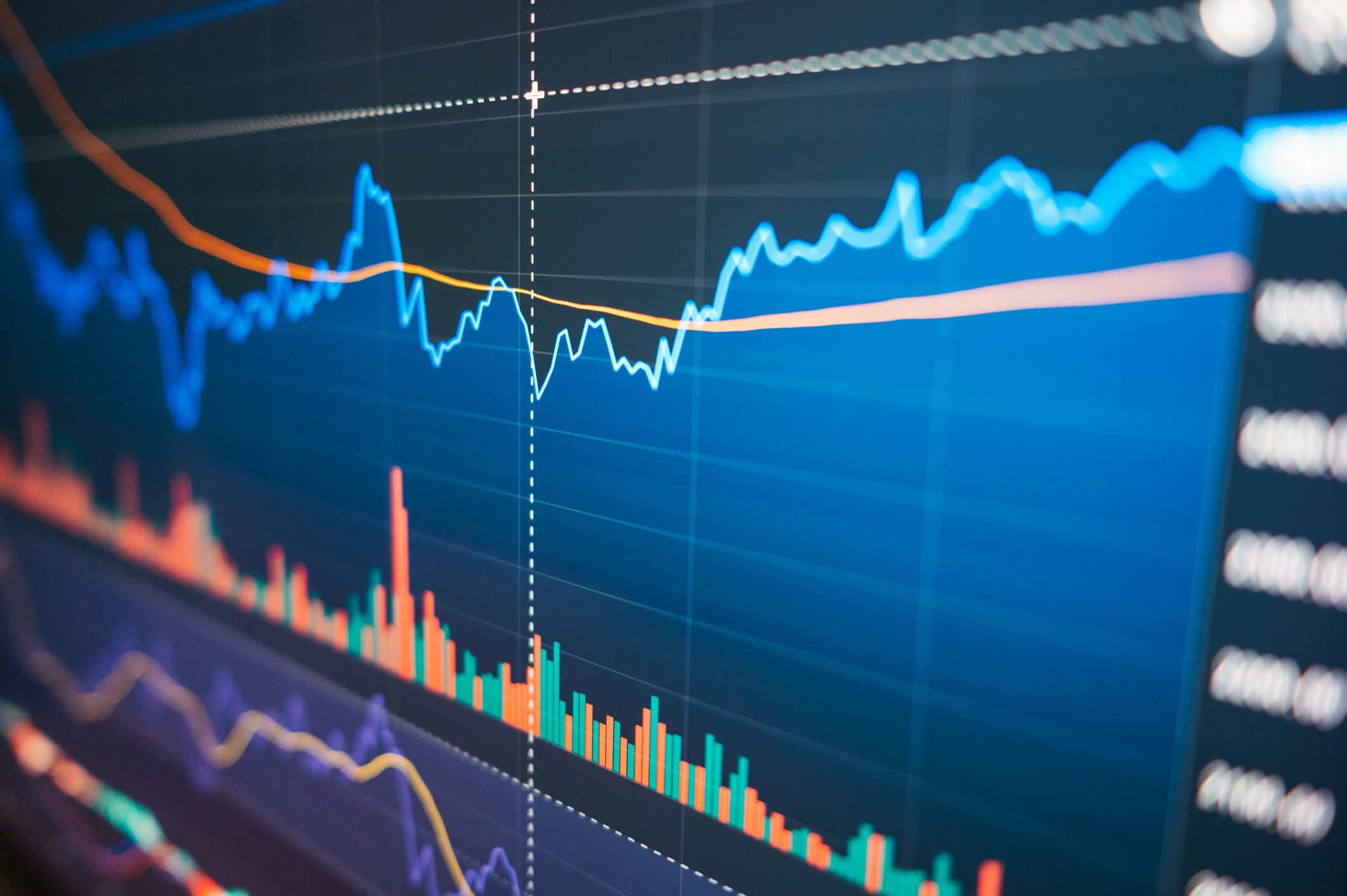7 Lessons From the Bull Market
What we learn from the recovery could help the next time we're in a bear market.

You’ve probably read a spate of articles on the lessons of the financial crisis, the Great Recession and the devastating bear market. Now, for something entirely different, I’d like to discuss the lessons of this bull market.
Yes, I know some of you think that the recent merrymaking is nothing more than a bear-market rally and that more pain is on the way. You may be right. The nation -- indeed, the world -- still faces plenty of economic challenges. And the stock-market selloff on October 1 in response to a weaker-than-expected report on manufacturing activity is certainly worrisome.
But when stocks suddenly reverse course in an atmosphere of pervasive gloom and ascend nearly 60% without pause for seven months, I have to assume that a lot of investors were caught napping, their money best kept -- so they thought -- beneath their mattresses. Let’s face it: Whatever you call it, missing a rally of this magnitude (and an even bigger advance in foreign stocks) is a serious error of omission.

Sign up for Kiplinger’s Free E-Newsletters
Profit and prosper with the best of expert advice on investing, taxes, retirement, personal finance and more - straight to your e-mail.
Profit and prosper with the best of expert advice - straight to your e-mail.
So it’s worth examining the lessons of the stock market’s amazing recovery. They could come in handy the next time we’re in the midst of a bear market that appears unlikely ever to end but (barring the collapse of our basic way of life) surely will.
Lesson 1. The stock market turns up when pessimism is rampant. Around the time stocks bottomed last March, fear and even panic were pervasive. The Conference Board’s index of consumer confidence for February, announced late that month, hit a record low. Retail sales were in the pits, home sales were awful and first-time claims for unemployment insurance were near their peak.
Investors? They were fearful, to say the least. A survey by AAII (formerly the American Association of Individual Investors) found that an unusually high percentage -- 70% -- were bearish on the future. As my colleague Bob Frick notes in his terrific story about how emotions lead us astray when it comes to financial decisions (see Be a Better Investor), the greatest monthly outflow from stock funds in the past two years occurred last February.
Another way to get a sense of the mourning in America last winter is to examine media coverage. A nearly perfect contrarian indicator, the cover story in the March 9 issue of Time was a special report on the economy headlined “Holding On for Dear Life.” The cover of BusinessWeek’s March 16 issue was titled “When Will the Bull Be Back?” The subtitle: “Most signs point to more stock market pain. But opportunities are emerging for very, very long-term investors” (emphasis BusinessWeek’s). As it turns out, shareholders have endured little pain since March 9. And I wonder whether seven months qualify as “very, very long-term.”
Lesson 2. A bear market associated with a recession almost always ends in the middle of the economic downturn. The stock market is what the pros call a discounting mechanism. This means that stock prices tend to anticipate the future. Looking back at 11 significant declines starting with the one at the end of World War II, the only time this rule failed was early in this decade: The 2000–02 bear market didn’t end until 11 months after the conclusion of the 2001 recession.
The U.S. economy contracted 6.4% in the first quarter of 2009 and 0.7% in the second quarter. But thanks to various Federal Reserve Board policies and Uncle Sam’s assorted stimulus programs, including “cash for clunkers” incentives for new-car purchases and tax breaks for first-time homeowners, the economy almost certainly grew in the third quarter (see Lesson 4 for more). On average, economists believe that real (that is, inflation-adjusted) gross domestic product jumped 3.0% in the July–September period, and they see expansion of 2.4% in the fourth quarter -- not exactly ripsnorting growth, but growth nonetheless. In either any case, the stock market appears to have bottomed three to six months before the economy -- right on schedule.
Lesson 3. Don’t obsess over earnings; they always lag the stock market. I’ll let Jim Stack, a money manager in Whitefish, Mont., who also edits the InvesTech Research Market Analyst newsletter, explain: “No matter how many times it is said, and everyone says they know it, for some reason lousy earnings always become an emotional block for investors in a new bull market. In the huge bull market of the 1990s, the stock market climbed for over a year (throughout 1991) before corporate earnings even hit bottom! One of the most valuable historical lessons is to completely ignore earnings and forecasts in the first six to 12 months of a new bull market.” Incidentally, Stack, who had warned of a coming bear market in July 2007, a mere three months before the peak, called the market’s March bottom almost to a T.
Lesson 4. Don’t underestimate the power of government intervention. Remember all the talk about how we were on the verge of another Great Depression? Well, we’ve come nowhere near it.
For instance, the U.S. unemployment rate is now at 9.8%; in the 1930s, the jobless rate topped out at about 25%. Much of the credit goes to the aggressive steps taken by the Bush and Obama administrations, Congress, and the Federal Reserve Board. The list of actions is endless: enactment of a $787-billion economic-stimulus program; the rescues of AIG, Fannie Mae and Freddie Mac, not to mention General Motors and Chrysler; the Fed’s move to cut short-term interest rates to zero and to buy more than $1-trillion worth of Treasury bonds and mortgage securities to hold down borrowing rates for home loans; the injection of emergency capital into dozens of banks; and the Treasury’s decision to insure money-market mutual funds.
And let’s not forget what policymakers did not do: raise taxes or initiate overly protectionist measures to defend U.S. industries. In short, policymakers learned well the lessons of the Great Depression. (Of course, the long-term implications of their actions, particularly regarding their potential to fuel inflation, are another matter.)
Lesson 5. The worst are often first -- at least at the outset. Stocks of companies that are small and weak, which often have had the stuffing beaten out of them during the down period, typically lead the way at the start of the bull market. Investors' dash to such trash has been particularly noticeable during this rebound, as Kiplinger columnist Steve Goldberg notes in a recent column.
Lesson 6. Once you decide to get in, don’t wait for a correction -- there’s no telling when it will come. With the market up significantly, you may be feeling more confident about stocks, but you’d like to see them come down a bit before you commit some money. History, however, shows that, on average, a correction -- defined as a drop of 10% -- comes 285 days after the start of a bull market, according to the Leuthold Group, a Minneapolis investment-research and money-management firm. In the case of the great bull market of the 1990s, which began in October 1990, the market rose 249% over 1,724 days before experiencing a correction.
Lesson 7. Pay attention when bears who had it right turn bullish. Several longtime pessimists -- including Jim Stack, the newsletter editor, hedge-fund manager Douglas Kass, and Jeremy Grantham, co-founder of GMO, a Boston-based investment manager -- began turning positive on stocks in late winter of 2009. This, of course, guarantees nothing (and it’s worth noting that other longtime bears, such as economist Nouriel Roubini and David Tice, of what is now called the Federated Prudent Bear fund, remained downbeat throughout the recovery).
But when well-regarded professionals start singing a different tune, you should try to find out why. Kass, for example, made his call in early March on the basis of favorable valuations, extremely negative investor sentiment and his expectation that the economy would stabilize in early 2010. (Kass withdrew his bullish call on September 29, saying the market had reached the target price he had established in March.) Stack, among other things, cited horrible investor- and consumer-sentiment figures as contrarian indicators.
Get Kiplinger Today newsletter — free
Profit and prosper with the best of Kiplinger's advice on investing, taxes, retirement, personal finance and much more. Delivered daily. Enter your email in the box and click Sign Me Up.

-
 The Best Health Care Stocks to Buy
The Best Health Care Stocks to BuyThe best health care stocks offer investors a defensive hedge in an uncertain market. Here's how to find them.
-
 Tapping Your 401(k) at 55 Isn't the Great Plan You Think it Is. Here's Why
Tapping Your 401(k) at 55 Isn't the Great Plan You Think it Is. Here's WhyIt's tempting to dip into your 401(k) at 55. But beware — you may rue that decision later. Here's what to do instead.
-
 Why Is Warren Buffett Selling So Much Stock?
Why Is Warren Buffett Selling So Much Stock?Berkshire Hathaway is dumping equities, hoarding cash and making market participants nervous.
-
 If You'd Put $1,000 Into Google Stock 20 Years Ago, Here's What You'd Have Today
If You'd Put $1,000 Into Google Stock 20 Years Ago, Here's What You'd Have TodayGoogle parent Alphabet has been a market-beating machine for ages.
-
 Stock Market Today: Stocks Retreat Ahead of Nvidia Earnings
Stock Market Today: Stocks Retreat Ahead of Nvidia EarningsMarkets lost ground on light volume Wednesday as traders keyed on AI bellwether Nvidia earnings after the close.
-
 Stock Market Today: Stocks Edge Higher With Nvidia Earnings in Focus
Stock Market Today: Stocks Edge Higher With Nvidia Earnings in FocusNvidia stock gained ground ahead of tomorrow's after-the-close earnings event, while Super Micro Computer got hit by a short seller report.
-
 Stock Market Today: Dow Hits New Record Closing High
Stock Market Today: Dow Hits New Record Closing HighThe Nasdaq Composite and S&P 500 finished in the red as semiconductor stocks struggled.
-
 Stock Market Today: Stocks Pop After Powell's Jackson Hole Speech
Stock Market Today: Stocks Pop After Powell's Jackson Hole SpeechFed Chair Powell's Jackson Hole speech struck a dovish tone which sent stocks soaring Friday.
-
 Stock Market Today: Stocks Drop Ahead of Powell's Jackson Hole Speech
Stock Market Today: Stocks Drop Ahead of Powell's Jackson Hole SpeechSentiment turned cautious ahead of Fed Chair Powell's highly anticipated speech Friday at the Jackson Hole Economic Symposium.
-
 Stock Market Today: Stocks Rise After Jobs Data Lifts Rate-Cut Odds
Stock Market Today: Stocks Rise After Jobs Data Lifts Rate-Cut OddsPreliminary data from the Bureau of Labor Statistics shows job growth was lower than previously estimated.